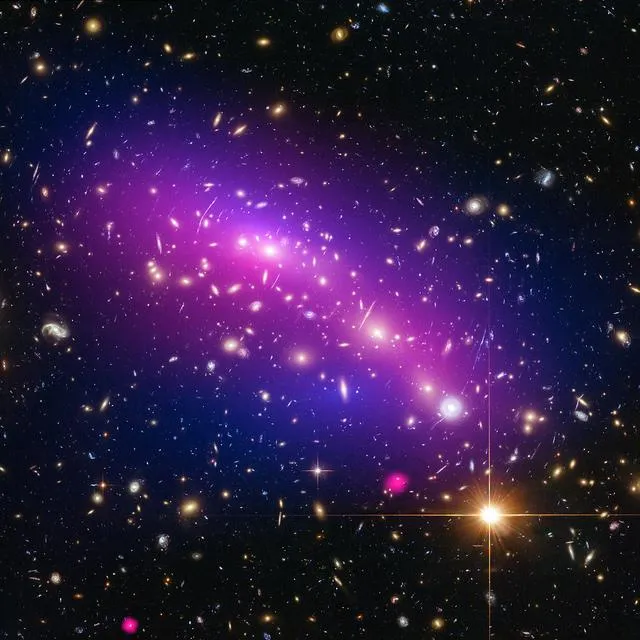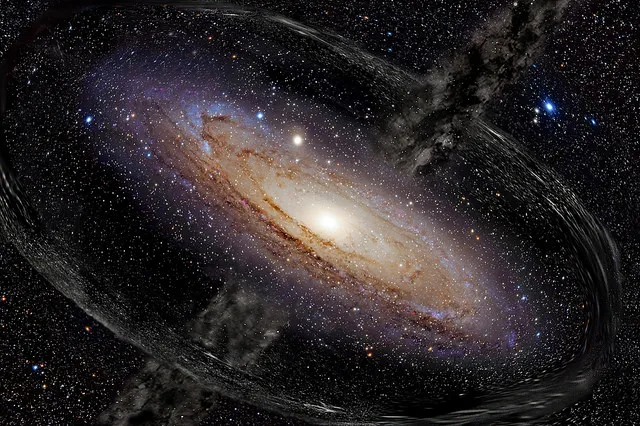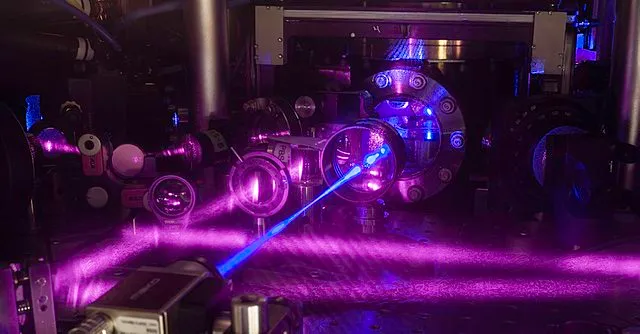The standard model of cosmology successfully provides explanations for most of cosmological observations. It consists in a very simple paradigm in which fixing a very small set of parameters yields an excellent theory-experiment agreement. This being said, alternative cosmologies are not excluded as well, but this is not the topic of the day.

[image credits: Chandra @ NASA (public domain)]
One of the most striking predictions of standard cosmology is definitely the presence of dark matter, some weird substance in the universe whose exact nature is still unknown.
In order to alleviate this issue, many experiments are currently searching for dark matter.
In particular, dark matter is probed through its interactions with normal matter, through cosmic rays and also at particle colliders where it could be directly produced.
However, there is no sign of dark matter so far…
One of the potential reasons could be that dark matter is much lighter than expected. It is in this case not searched for with the appropriate tools, which is why it has not been found yet.
In a recent scientific article, a triplet of researchers have demonstrated that such tools already exist and could be readily used. Light dark matter can indeed be probed… with common devices like atomic clocks.
DARK MATTER IN A NUTSHELL
As said above, dark matter helps a lot for what concerns cosmological data. For instance, it provides an explanation for the circular motion of stars around galactic centers by means of classical mechanics.

[image credits: Maxwell Hamilton (CC BY 2.0)]
Theory and data agreement indeed requires the presence of something dark (i.e. invisible) and gravitationally interacting (i.e. it is matter). This is actually how the dark matter story started, but it is far from ending there.
For instance, dark matter also allows us to explain the properties of the cosmic microwave background, the microwave fossil radiation uniformly filling the universe.
Furthermore, it could also contribute in getting a grip on the formation of large structures in the universe, as well as on gravitational lensing. And the complete list actually is much larger…
However, dark matter still escapes direct detection, despite being at the center of the experimental effort in (astro)particle physics. Numerous instruments hence target dark matter, but did not get any success so far.
One common ground between most these experiments is that they are mainly targeting dark matter particle compliant with the WIMP hypothesis, so that they are far from being general. Before discussing other, non-wimpy, options for dark matter, let us focus a bit on WIMPs.
MORE ABOUT WIMPS
The Standard Model of particle physics is an extremely powerful theory, as after fixing 26 free parameters, its predictions agree with hundreds of thousands of measurements. We can (subjectively) say that it consists in the most tested theory of all time.
However, the Standard Model is plagued by limitations and conceptual inconsistencies so that physicists are convinced that the theory actually realized in nature is an extension of the Standard Model.

[image credits: NASA]
A plethora of Standard Model extensions has therefore been proposed, to tackle those limitations. Many of these theories feature a WIMP as a dark matter candidate (which is why WIMPs are very motivated dark matter particles).
A WIMP is a Weakly Interacting Massive Particle (here is the acronym) and such particles were present in large amounts in the very early universe, being in equilibrium with all other particles. WIMPS were hence annihilating and created at the same rate.
With the expansion and cooling down of the universe, WIMP production stopped (the universe was not warm enough anymore to allow for it) and the WIMP density started to decrease (as WIMP annihilations were still on-going).
A bit further in time, the universe has extended so much that WIMPS were too diluted to meet and efficiently annihilate. Their density hence became constant. The left-over of the initial WIMP density is called the relic abundance of dark matter, and has been measured by Planck collaboration.
This relic of dark matter can be generally predicted correctly in many extensions of the Standard Model if the dark matter particle is weakly interacting and has a mass close to the mass of the particles mediating the weak interactions. In other words, if dark matter is made of WIMPs.
LIGHT DARK MATTER AND ATOMIC CLOCKS
WIMPS have not been observed yet, so that the WIMP hypothesis may not be the one realized in nature. Other options are moreover possible.
Much lighter dark matter is for instance viable, with a dark matter mass being even millions of times smaller than typical WIMP masses. Such dark particles are however not reachable by current of experiments, as they lie outside their window of sensitivity (these experiments have just not been built to detect those super-light guys).

[image credits: Francis Flinch (public domain)]
But we must be pragmatic and try all options, to ensure we are not missing anything. For what concerns light and ultra light dark matter, we hence need to rely on other, potentially novel, experimental detection techniques.
Making use of atomic clocks is one of such options, with the neat advantages those devices exist and are common.
Atomic clocks are the most precise device ever built by humans. They use the energy (or frequency) of the photons emitted during specific atomic transitions (when an atom is getting back from an excited state to its fundamental state) as a standard candle to define time (or the second, precisely).
The presence of dark matter could affect these transitions so that we could measure variations in time of the definition of a second. Those modifications depend on the dark matter mass, so that measuring them provide new handles on dark matter (when dark matter is light). Thanks to the capacities of current atomic clocks, it turns out that dark matter masses that are 10.000.000.000.000.000.000.000 times smaller than a typical WIMP mass can be measured.
SUMMARY AND TAKE HOME MESSAGE
Until now, most searches for dark matter focus on looking for heavy weakly interacting particles, aka WIMPs. However, there is no reason for dark matter to be heavy. Very light options are indeed possible and not excluded by data. In this case, the current experiments are simply not sensitive to dark matter.
Do we have any way to probe dark matter in this case? Yes, but we may need to think about using different devices. In this article, it was shown that atomic clocks, apparatuses that are so precise that they are used to define time (or more precisely, to define the duration of a second) can be used to detect light dark matter. The strategy depicted in the article relies on the fact that dark matter interferes with the frequency of the atomic clocks over time, and those variations can be measured. From there, it is kind of easy to go back to the properties of dark matter.
STEEMSTEM
SteemSTEM aims to build a community of science lovers to make Steem a better place for Science Technology Engineering and Mathematics (STEM). We have recently released our own app, steemstem.io, and we run a witness to support the Steem blockchain.
More information can be found on the @steemstem blog (here for the latest news) and on our discord server.
We are on our way to make Steem a crucial medium for science communication, and it is still time to contribute to this effort!